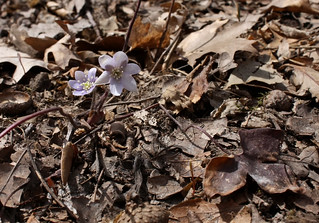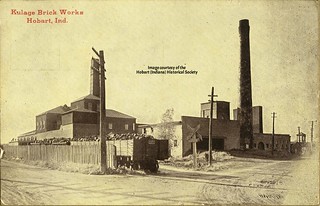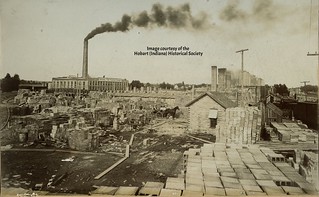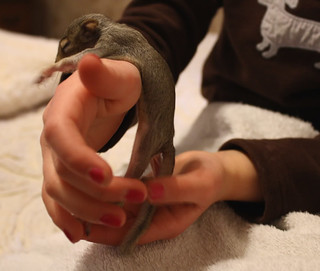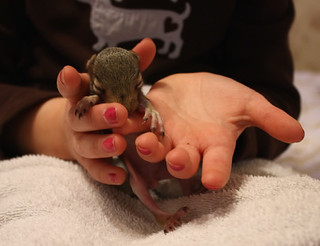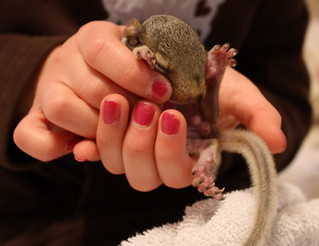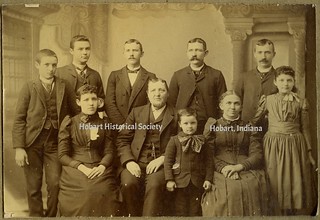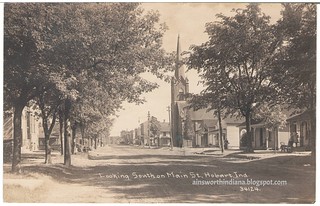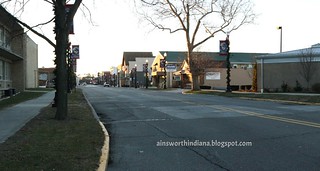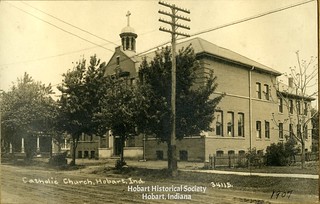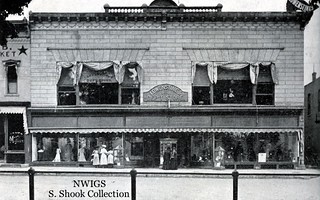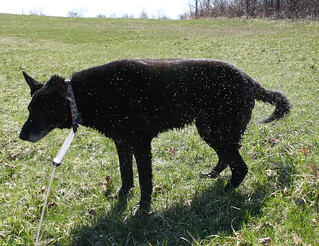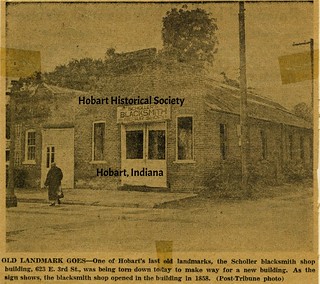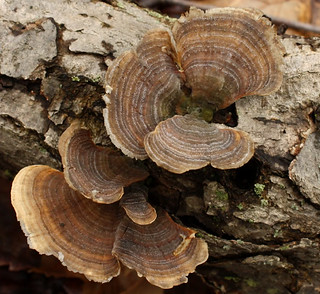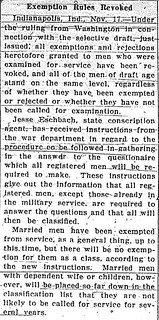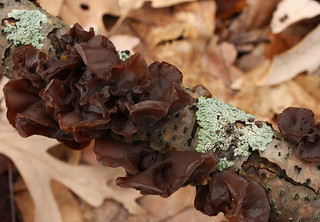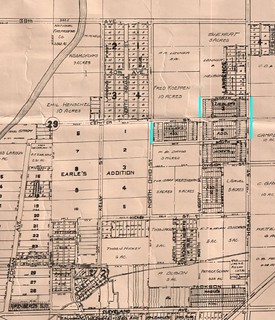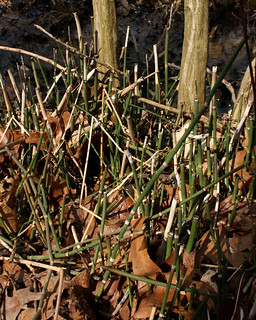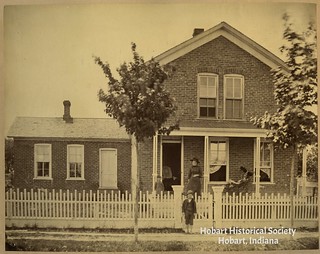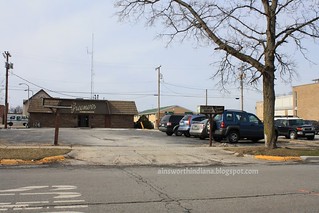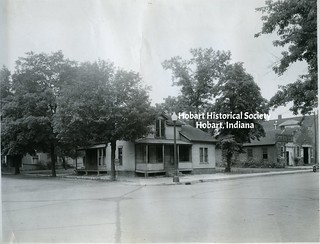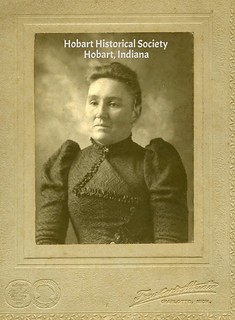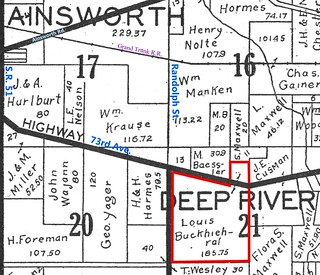 (Click on image to enlarge)
(Click on image to enlarge)
This image from the 1926 Plat Book shows two things: (1) the 185 acres of land the Buchfuehrers bought from Sylvester Casbon in 1908, and (2) how truly creative the 1926 mapmakers could get with the spelling of people's names.Louis and Frederike Buchfuehrer had been farming in Ross Township, just west of the village of Deep River, for not quite nine years when they announced in the autumn of 1917 that they were making plans to leave. Compared to some of the
long-timers we've seen leaving lately, they were relative newcomers.
The Buchfuehrers were both German immigrants. They came to this country in 1887 as a couple, having been married in the old country in 1882. I don't know where they settled at first. They don't appear in the
1891 Plat Book. By 1900 we find them farming rented land west of Hobart. After several years they were doing well enough for themselves that they also purchased a lot in town, on State Street, and built a brick house there. In 1908, when they bought Sylvester Casbon's 185-acre Ross Township farm, that new brick house was included in the purchase price. But in the years that followed, the Buchfuehrers were able to buy their Hobart house back from Sylvester.
Now that Louis was 57 years old and wanting a break from the hard work of farming, they planned to move into their Hobart home. Their eldest son, Emil, would live on the farm with his wife Bessie and their three small children; he would operate the farm for himself and pay his parents rent.
Louis placed a detailed ad for the auction of his livestock and farming equipment.
 (Click on image to enlarge)
(Click on image to enlarge)Although Louis and Frederike themselves spent less than a decade on their Ross Township farm, they had put down roots; they had planted a family tree that still grows on those acres.
♦ ♦ ♦[1/17/2013 update] Image my surprise when I learned that this auction had been photographed!
This first photo shows, at left, the Buchfuehrers' brick farmhouse on the north side of the old Lincoln Highway, aka E. 73rd Ave. So here the camera is pointing more or less eastward, and if you stepped onto that road and started walking into the background of the photo, you'd eventually find yourself in the village of Deep River.
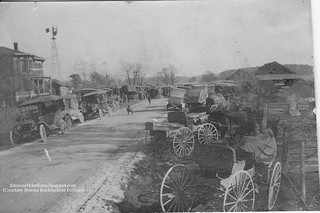 (Click on images to enlarge)
(Click on images to enlarge)
Images courtesy of Norma Buchfuehrer Collins. That brick house, I suppose, was built by Sylvester Casbon and came with the farm that the Buchfuehrers bought from him. It is no longer standing.
The second photo was taken from the south side of 73rd Ave., looking north. Once again we can see the original house, in the background at left.
 ♦ ♦ ♦
♦ ♦ ♦[1/18/2013 update]
After I posted the two photos above, another Ainsworth historian volunteered the following four pictures of the same event.
I believe this first one shows some of the buggies and farm equipment to be auctioned.
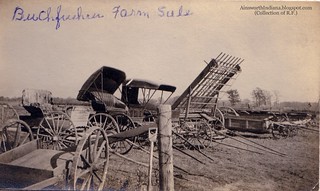 (Click on images to enlarge)
(Click on images to enlarge)
Images courtesy of R.F.The newspaper announcement mentioned that lunch would be served by the Ladies' Aid Society (of Deep River, probably), so I think that's what we're looking at in this next photo. "Sadie Baker" may be the wife of William Baker, who later
bought a general store in Deep River.

In the following photo, the caption and mark in blue ink suggest that the man at center with his hand on his hip is John Call. We do have that
other photo of John, but this one really isn't clear enough for me to declare them a match.

That is the front porch of the Buchfuehrer house at the extreme left, so we're on the north side of 73rd Ave., looking eastward.
The last photo includes a nice shot of the front of the house. The auction announcement didn't mention any automobiles for sale, so perhaps the photographer just liked cars, or just wanted to show what fine vehicles the local farmers drove.
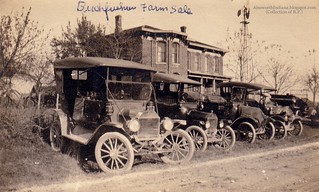 ♦ ♦ ♦
♦ ♦ ♦[1/25/2013
update] Still more photos of this auction! Thanks to Suzi Emig for sending these in, and thanks to the unknown photographer, wherever he/she may have been, for taking all these photos in the first place.
Here we're looking eastward along the old Lincoln Highway, with the old Buchfuehrer house at center-left.
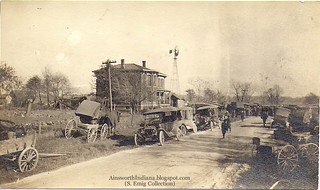 (Click on images to enlarge)
(Click on images to enlarge)
Images courtesy of Suzi Emig.In this one, I'm not sure which way we're facing. More interesting is the condition of the road. It looks as if it might have some gravel among the dirt … and a nice dip down the center.

I suppose there's bidding going on in this next one; I just wish it were a little clearer, so that maybe we could see what they are bidding on.

And that's all the Buchfuehrer auction photos for now. The way things have been going, I expect another batch to turn up soon.
Sources:
♦ 1891 Plat Book.
♦ 1900 Census.
♦ 1910 Census.
♦ 1920 Census.
♦ "Auction Sale." Hobart Gazette 26 Oct. 1917.
♦ "General News Items." Hobart Gazette 4 Sept. 1908.
♦ "Local and Personal." Hobart News 18 Oct. 1917.
♦ "Local Drifts." Hobart Gazette 26 Oct. 1917; 15 Feb. 1918.
♦ "Public Sale." Hobart News 25 Oct. 1917.
